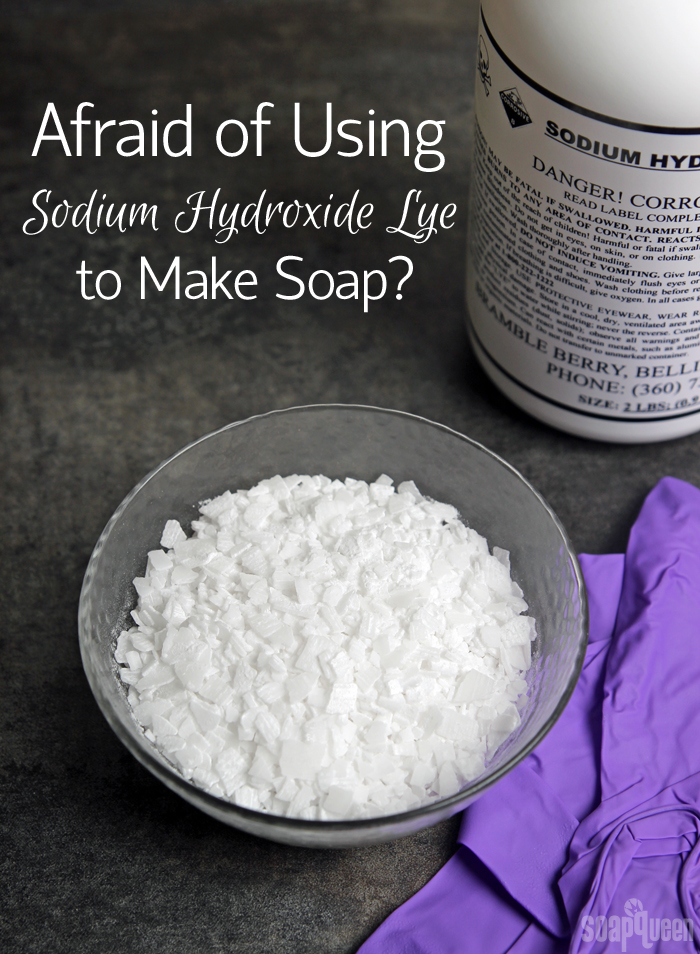
When I started making soap at 16 years old, I rendered my own fat and started my foray into all-things-soap with cold process soap. That was messy. Ingredients were hard to come by. And there was zero instruction out there. My first five batches failed. Then, I made melt and pour. It wasn’t the popular craft it is today. It was hard to find the bases, and handmade soap wasn’t the rage at craft fairs. But after just one melt and pour project, I became totally obsessed with the process. So much so that two years later, I started selling melt and pour at local markets part time.
Around that time, I started re-engaging with cold process soap. If you’re a soaper who transitioned from melt and pour to cold process, you know how intimidating it can be. Melt and pour is rather predicable, and you know within a few hours if it turned out or not. The main source of anxiety when leaping into cold process soap is the introduction of lye, aka: sodium hydroxide. It even has a bit of a scary name, doesn’t it?
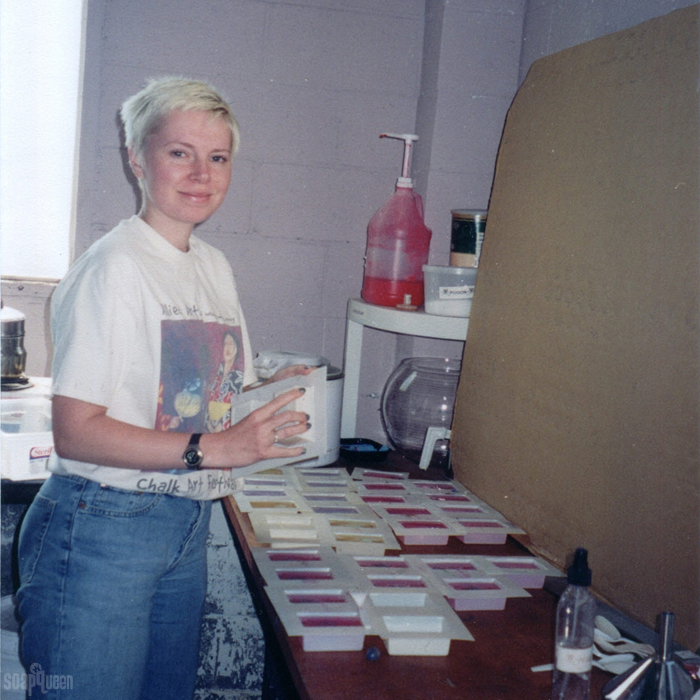 I made melt and pour for several years before trying cold process soap.
I made melt and pour for several years before trying cold process soap.
If the fear of lye is holding you back from transitioning to cold process soap…I completely understand. Lye is a caustic chemical that can cause bodily harm and it should be handled with utmost care. But, lye is perfectly safe when handled correctly. This is true for most things in life, from driving a car to mundane tasks like turning on a gas stove. With proper safety precautions, working with lye is safe and easy. For full details on lye safety, check out the Lye Safety Guide.
In fact, you’ve probably handled lye before. Have you used Drano or other drain cleaner? Check out the ingredients. Sodium hydroxide will be there, front and center. Drain cleaners usually contain other chemicals that make them unsuitable to use in cold process soap. But, they use the same active ingredient: sodium hydroxide lye. Kinda neat, huh? =)
Let’s talk about what lye is not. Lye is not the chemical in the movie Fight Club. For many, the scene in Fight Club when lye powder is dowsed on Edward Norton’s hand is their only knowledge of sodium hydroxide. It’s a gory scene that has definitely left its mark on the idea of soapmaking. Many times when I tell people I sell soaping supplies they say, “soapmaking…like in Fight Club!?” Lye on the skin can be painful, but it’s not an immediate flesh-eating experience (sorry for the visual!) like shown in the movie.
So, you might be wondering…what does lye actually feel like on the skin? If you touch a lye flake with bare hands, you probably won’t feel much for a while. Then, it will start to itch and sting a bit. If you get lye solution (lye mixed with water) on your skin, you’ll notice a burning/itchy sensation. If the lye solution is freshly made and quite hot, it will burn much more dramatically.
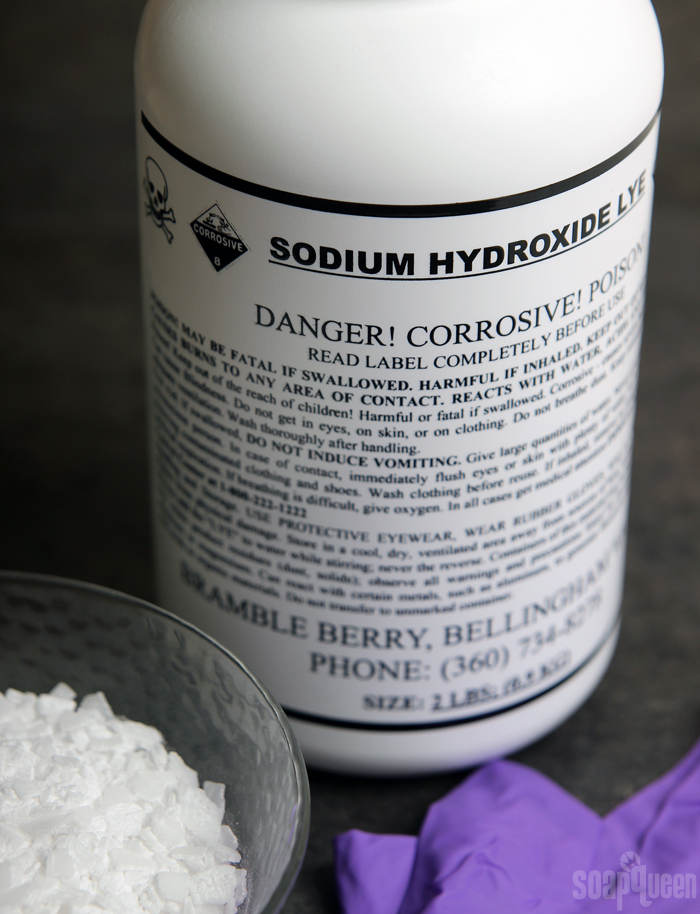 One look at a container of sodium hydroxide lye, and you know it’s dangerous. Lye safety needs to be taken seriously, but it’s not quite the chemical depicted in Fight Club.
One look at a container of sodium hydroxide lye, and you know it’s dangerous. Lye safety needs to be taken seriously, but it’s not quite the chemical depicted in Fight Club.
That being said, I’m sure plenty of soapers will tell you they didn’t notice cooled lye solution on their skin until minutes later. After that amount of time on the skin, the lye begins to irritate the skin more seriously, and you’ll notice. The burning and itching feeling is more intense (but nothing like Fight Club!) Immediately remove any contaminated clothing and rinse the skin with water for at least 15 minutes. If it comes in contact with eyes, flush immediately with water for at least 15 minutes and get medical attention. If inhaled, move to fresh air.
Now, I know all that sounds scary. But, that’s why you always, always suit up for safety. This includes:
- Wearing long sleeves, long pants and closed toed shoes.
- Wearing protective gloves.
- Wearing eye goggles.
Completely covering your body, arms, legs, hands and eyes drastically reduces any chance of your skin coming in contact with lye.
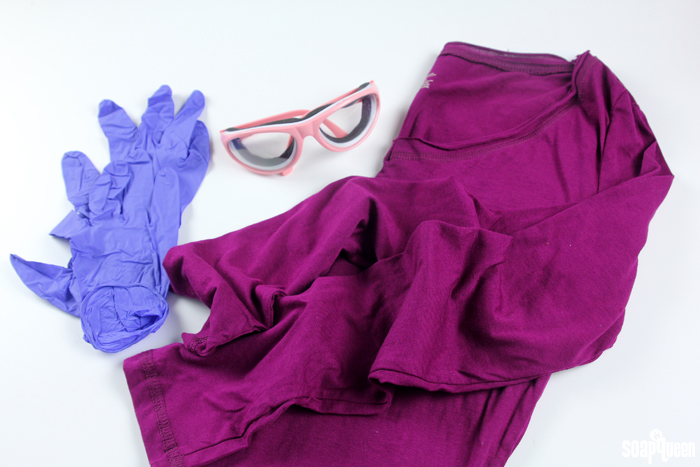 Wearing proper safety attire is essential when working with lye.
Wearing proper safety attire is essential when working with lye.
Now…what about the lye fumes? Mixing water and lye creates an exothermic reaction that causes a dramatic temperature increase. Adding lye to room temperature water can cause the water to reach temperatures up to 200 ° F. The mixture creates fumes, which should not be inhaled. Some soapers also like to wear a surgical mask to prevent breathing in fumes.
This is a personal preference. I do not wear a mask when mixing or handling lye. I find a well ventilated room does the trick. But, I always make sure kids and pets are nowhere near the fumes. Some soapers prefer to mix their lye water outside to be extra cautious. If you live in a small apartment, open up nearby windows. You may also want to turn on a fan.
Once the lye is mixed, properly label it “DANGER: LYE. DON’T TOUCH.” Store the lye mixture in a place where kids can not get to it. Once the lye water is mixed with soap oils, the saponification process begins. Soap batter can still sting the skin, which is why it’s still important to wear safety gear.
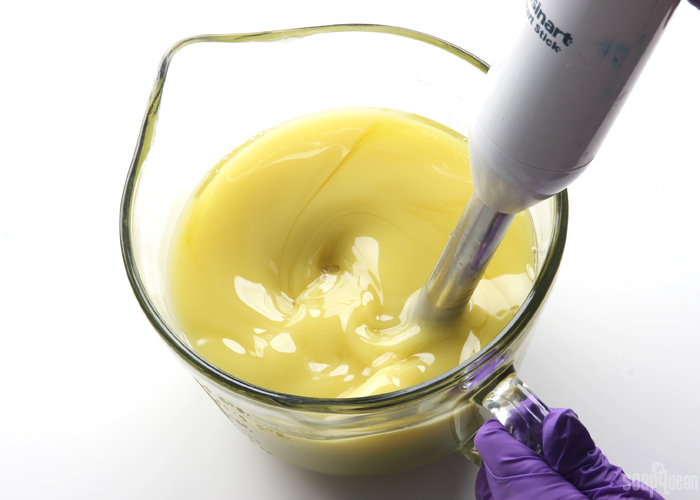 Fresh soap batter can still sting the skin. Wear your safety gear throughout the entire soaping process!
Fresh soap batter can still sting the skin. Wear your safety gear throughout the entire soaping process!
After 20 years of making cold process soap, I can firmly say that I have never had a serious lye burn. My worst lye experience was soap batter on a fresh cut. Wowza, that stung! But, after washing the cut in cool water for a few minutes, no serious harm was done.
My last tip for using lye correctly and safely for soap is to purchase your lye from a reputable source. Drain cleaners contain sodium hydroxide, but they are not suitable for soaping because they contain other ingredients. This may also be true for lye at hardware stores. Always check the ingredients thoroughly, and make sure the ingredients are sodium hydroxide only. Lye sold at Bramble Berry is 98% pure. The other 2% is an anti-caking agent that does not affect the soaping process.
Long story short? Working with lye for the first time is scary. A little bit of healthy fear is good because it can cause bodily harm. But, if you want to try cold process soap, don’t let fear hold you back! On the flip side, lye is a serious chemical that should be taken seriously. To learn more about using sodium hydroxide safely, check out my Lye Safety Guide. Then, watch the Soap Queen TV video above. It’s an oldie, but all the lye safety information still applies.
